While they may look extremely similar, there are a number of differences between the Basset Hound vs Bloodhound. Given that both of these dog breeds are hunting or scent hound dogs, they have a lot in common. However, we are interested in their differences today. What separates them from one another and makes these two distinct breeds special?
In this article, we will address everything you need to know about both the Basset Hound and the Bloodhound. We will discuss the physical appearances of both of these dogs so that you can learn how to tell them apart.
Finally, we will go over their ancestry and behavioral differences of a basset hound bloodhound in case you are interested in adopting either of these two breeds. Let’s get started now!
Comparing Basset Hound vs Bloodhound
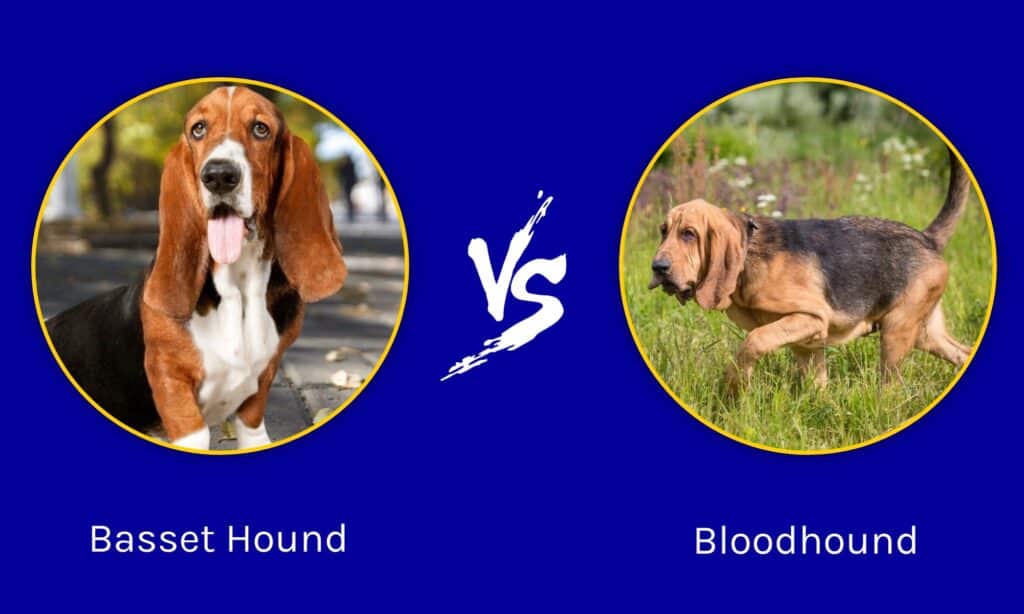
| Basset Hound | Bloodhound | |
|---|---|---|
| Size | 11-15 inches tall; 40-80 pounds | 23-27 inches tall; 80-110 pounds |
| Appearance | Long bodied with short and stubby legs. Incredibly long, floppy ears and drooping expression. Only comes in brown, red, black, and white colorations. | Sturdy and large frame found in brown, black, and red colors. Large, drooping ears and face, with loose skin and wrinkles. Very elegant while working, with long legs |
| Ancestry | Originally bred in the 1800s in Europe as a hound dog breed, though ancestry dates back to 6th century France. Capable scent hound for hunting hare | Originally bred in Medieval France for hunting large game such as boar and deer. Later used for tracking humans, given their powerful scent abilities; best nose of all hounds |
| Behavior | Friendly, silly, and intelligent, though can be extremely stubborn during training and if they don’t have a firm hand. Highly food motivated, though does need to be monitored for weight issues | Gentle, patient, and a bit lazy. Enjoys a variety of family situations, though can be extremely stubborn during training and during moments of tracking a scent. Very vocal and may need a firm hand to avoid stubborn behavior |
| Lifespan | 10-12 years | 10-12 years |
Key Differences Between Basset Hound vs Bloodhound
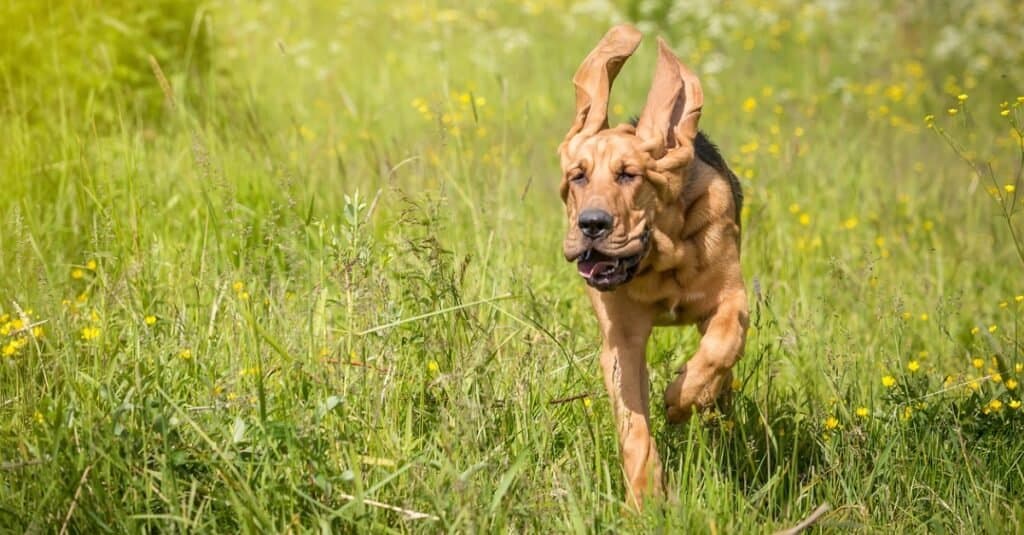
The Basset Hound is more food motivated when it comes to training compared to the Bloodhound.
©iStock.com/Edoma
There are many key differences between the Basset Hound Bloodhound. The Bloodhound is larger than the Basset Hound, in both height and weight. Additionally, the Bloodhound is a much older breed compared to the Basset Hound. Finally, the Basset Hound is more food motivated when it comes to training compared to the Bloodhound.
Let’s discuss all of these differences and similarities in more detail now.
Basset Hound vs Bloodhound: Size
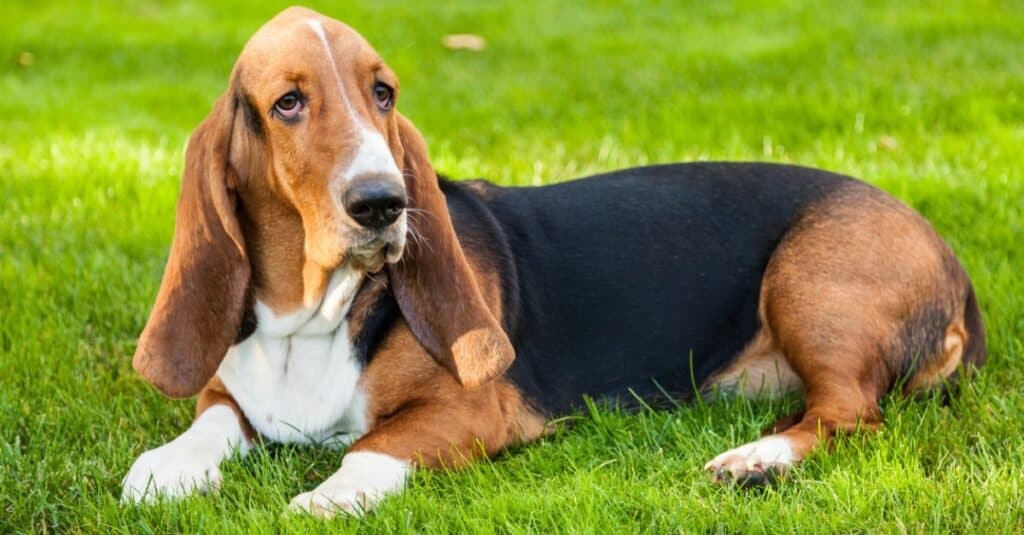
Depending on gender, the Bloodhound reaches heights of 23 to 27 inches tall, while the Basset Hound only reaches 11 to 15 inches tall.
©iStock.com/artisteer
It is clear just by looking at these two dog breeds side by side that the Basset Hound is smaller than the Bloodhound, in both height and weight.
Given the fact that the Basset Hound is famous for being short legged and petite, the Bloodhound gets quite a bit larger. But by how much? Let’s take a closer look at the figures now.
Depending on gender, the Bloodhound reaches heights of 23 to 27 inches tall, while the Basset Hound only reaches 11 to 15 inches tall. As you can no doubt guess, there are some significant weight differences between these two dog breeds as well.
For example, the average Bloodhound reaches anywhere from 80-110 pounds, while the Basset Hound only grows 40-80 pounds total.
Basset Hound vs Bloodhound: Appearance

The Bloodhound is more drooping and wrinkled in its appearance compared to the average Basset Hound.
©Ermolaev Alexander/Shutterstock.com
You can tell that a Basset Hound and a Bloodhound are distantly related, which is of course true. However, there are a few physical differences separating a Bloodhound from a Basset Hound. For example, the legs of the Basset Hound are much shorter compared to the legs of the Bloodhound. Additionally, Bloodhounds are sometimes one solid color, while Basset Hounds have a distinct fur pattern and coloration.
Both of these dog breeds have extremely long and floppy ears, with drooping jowls and muzzles. However, the Bloodhound is more drooping and wrinkled in its appearance compared to the average Basset Hound. Finally, the Bloodhound appears more wrinkled in its appearance compared to the Basset Hound, though both of these dogs have a distinct appearance unique to the hound dog breed.
Basset Hound vs Bloodhound: Ancestry and Breeding
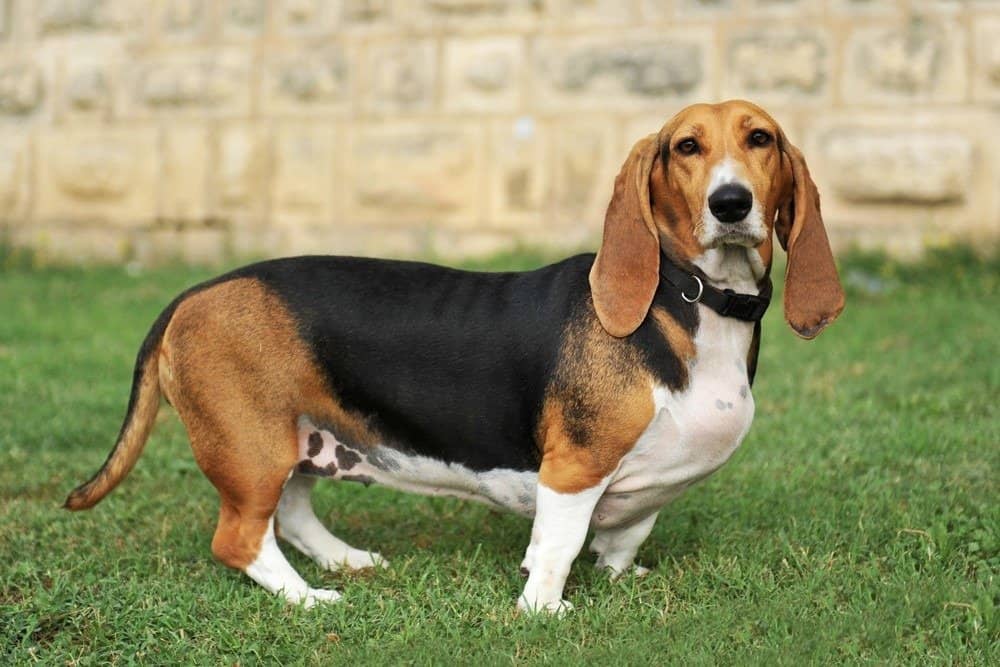
The Basset Hound was originally bred to hunt hair or rabbits, while the Bloodhound was originally bred to hunt larger game.
©cynoclub/Shutterstock.com
While the Bloodhound and Basset Hound were bred for a similar reason, there are some differences in their ancestries. For example, the Bloodhound is a much older dog breed compared to the Basset Hound, as the Bloodhound originated in medieval France, while the Basset Hound originated in Europe sometime during the 1800s.
It should come as no surprise to hear that both of these dog breeds are fantastic scent dogs and hunting companions, capable of tracking scents over many miles. However, the Basset Hound was originally bred to hunt hair or rabbits, while the Bloodhound was originally bred to hunt larger game. Nowadays, the Bloodhound is more adept at tracking humans or other necessary scents, while the Basset Hound is primarily a companion animal.
Basset Hound vs Bloodhound: Behavior
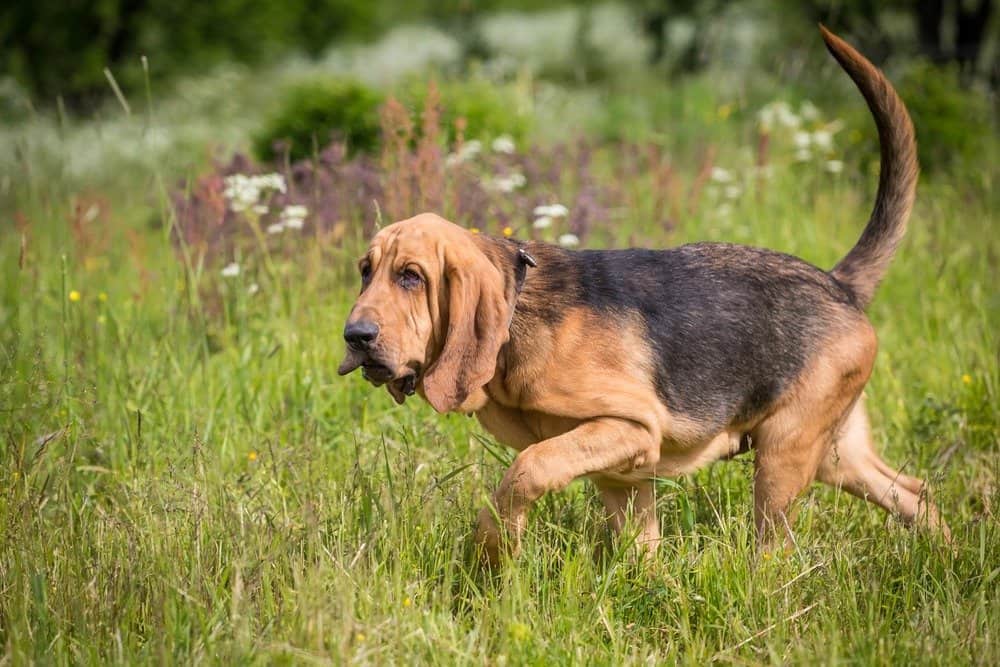
The Basset Hound tends to be far more food motivated compared to the average Bloodhound, and this is especially useful during training.
©Edoma/Shutterstock.com
Both the Bloodhound and the Basset Hound have very similar behaviors, as they are technically related. Both of these dogs enjoy vocalizing and communicating with their families, often in an endearing and adorable way. However, the Basset Hound tends to be far more food motivated compared to the average Bloodhound, and this is especially useful during training.
Both of these dogs make fantastic family animals, though the Basset Hound exhibits more stubbornness during training compared to the average Bloodhound. However, this does not mean that the Bloodhound is faultless. In fact, it is important to train your Bloodhound in a location without too much stimulation, as they are easily distracted by their nose compared to the average Basset Hound.
Basset Hound vs Bloodhound: Lifespan
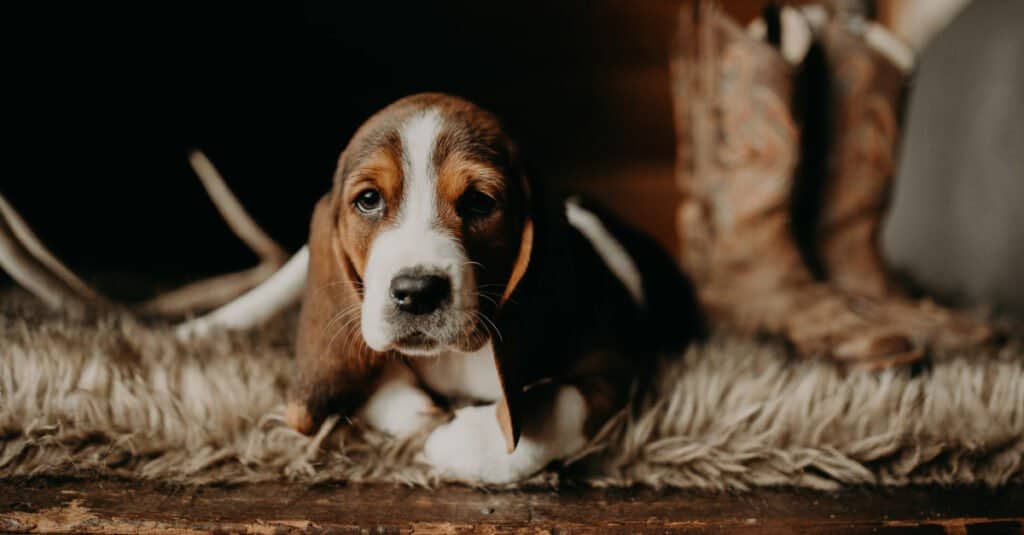
The Basset Hound has a number of health issues, which makes their lifespan almost identical to the average Bloodhound.
©iStock.com/Jessica Nystrom
You may think that because of the obvious size differences between the Basset Hound and the Bloodhound that they would have different lifespans. However, both of these dogs live an average of 10 to 12 years. The Basset Hound has a number of health issues, which makes their lifespan almost identical to the average Bloodhound.
The photo featured at the top of this post is © iStock.com/artisteer
Ready to discover the top 10 cutest dog breeds in the entire world?
How about the fastest dogs, the largest dogs and those that are -- quite frankly -- just the kindest dogs on the planet? Each day, AZ Animals sends out lists just like this to our thousands of email subscribers. And the best part? It's FREE. Join today by entering your email below.
Thank you for reading! Have some feedback for us? Contact the AZ Animals editorial team.






